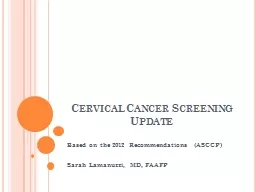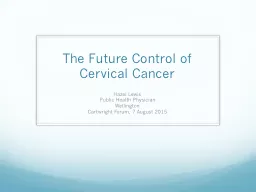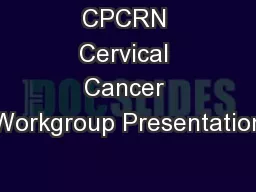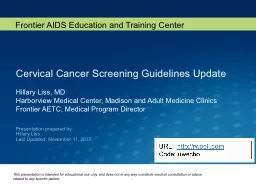PPT-Cervical Cancer Staging:
Author : criticanime | Published Date : 2020-08-28
A Residents Primer Presented as an education exhibit at the 2014 RSNA Annual Meeting OBE117 All authors have disclosed no relevant relationships Anish Raithatha
Presentation Embed Code
Download Presentation
Download Presentation The PPT/PDF document "Cervical Cancer Staging:" is the property of its rightful owner. Permission is granted to download and print the materials on this website for personal, non-commercial use only, and to display it on your personal computer provided you do not modify the materials and that you retain all copyright notices contained in the materials. By downloading content from our website, you accept the terms of this agreement.
Cervical Cancer Staging:: Transcript
Download Rules Of Document
"Cervical Cancer Staging:"The content belongs to its owner. You may download and print it for personal use, without modification, and keep all copyright notices. By downloading, you agree to these terms.
Related Documents














